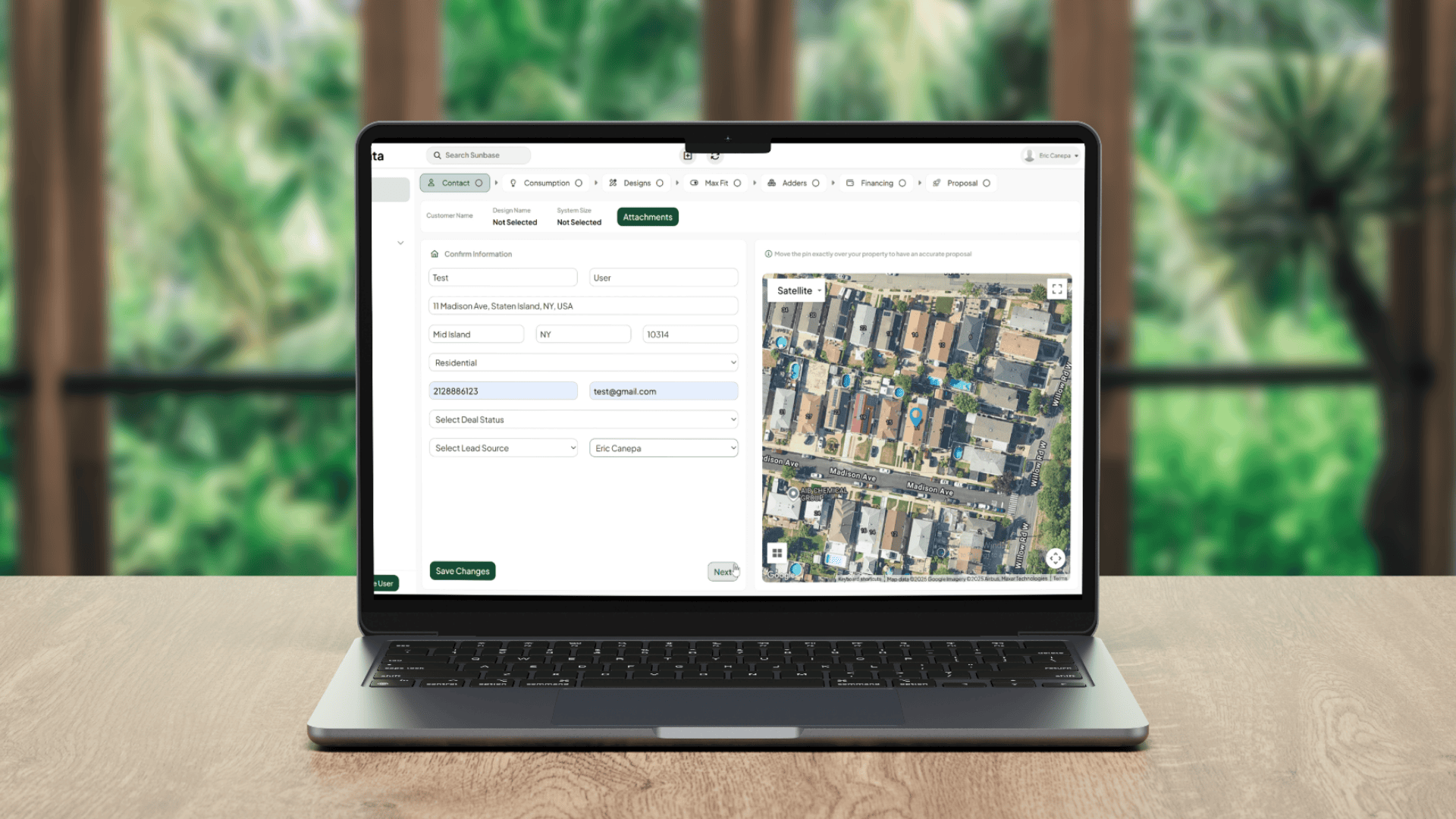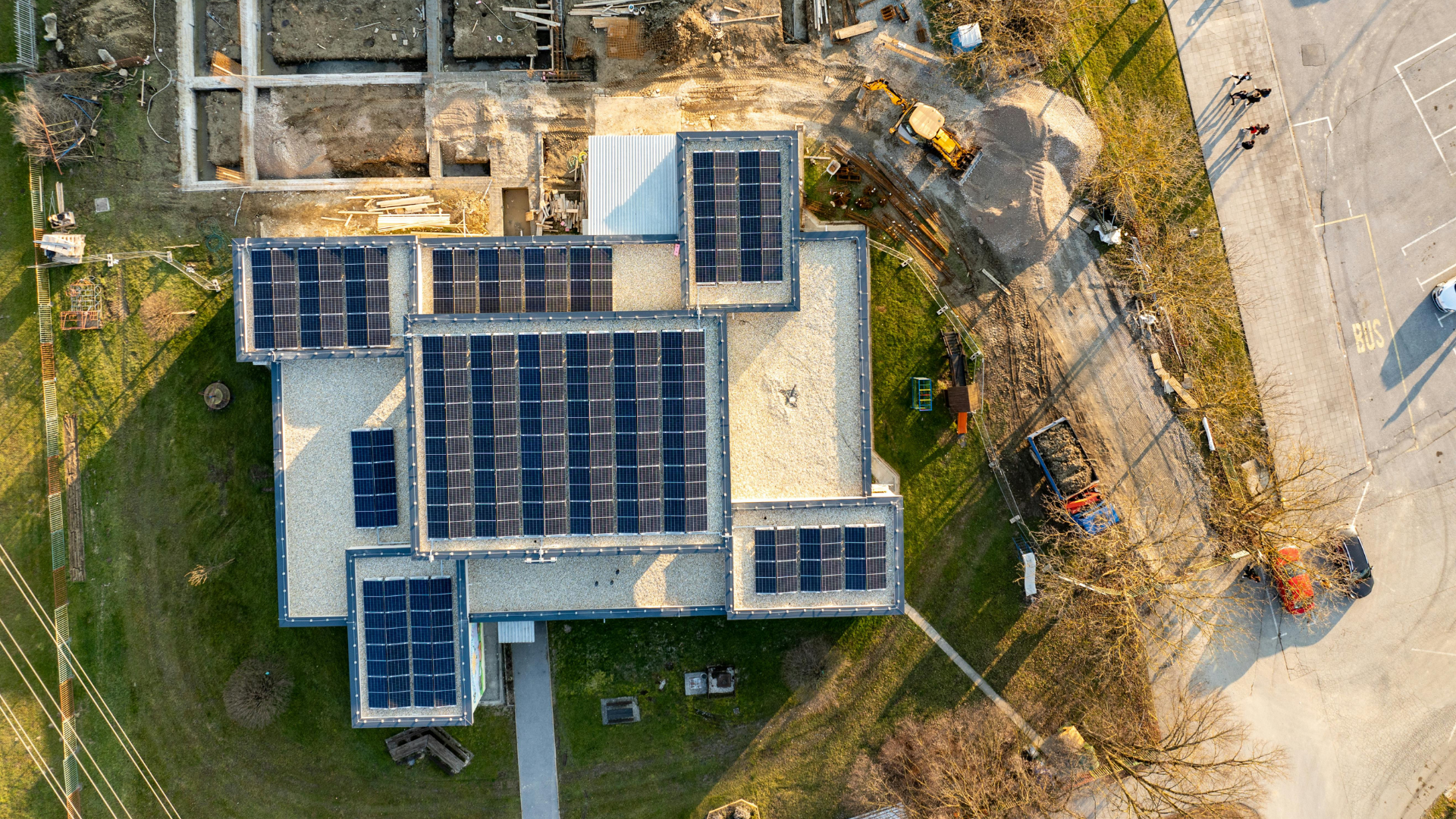December 21, 2023
In the rapidly evolving field of solar energy, PV (photovoltaic) design software plays a crucial role in streamlining and optimizing the design process. With advancements in technology, the year 2024 brings a new wave of cutting-edge PV design software that offers innovative features and functionalities.
This comprehensive guide aims to provide an in-depth understanding of the latest PV design software available in the market. Whether you're a solar engineer, installer, or enthusiast, this guide will equip you with the knowledge to make informed decisions and stay ahead in the field of solar energy.
What are the Benefits of Solar Design Software?
Solar design software is a type of computer program that allows users to create, simulate, and analyze solar energy systems. It is designed for engineers, installers, and other professionals involved in the process of designing and installing solar panels.
With the increasing demand for renewable energy sources, solar design software has become an essential tool for the industry. The software helps users to accurately calculate the solar power potential, optimize system design, and estimate the cost of materials and installation.
Now, let's jump directly at the benefits of a PV Solar design software:
1. Increased efficiency and accuracy
Solar Design Software automates many manual tasks involved in the solar design process, reducing human error and increasing overall efficiency.
With precise tools for designing solar systems, System designers can create accurate designs that optimize energy production and minimize costs.
2. Cost-effectiveness
Solar Software transforms the solar industry with its affordable and innovative solutions.
Automated generation of proposals and optimization tools that simplify operations, eliminating the need for manual calculations and designs.
It results in decreased labor costs, enhanced productivity, and amplified profitability. It's time to unlock the untapped potential of solar companies!
3. Increased productivity and scalability
Solar design software is a game-changer for companies, revolutionizing workflow and boosting productivity.
It allows solar developers, installers, and engineers to work together on a single, versatile platform combining efficiency and accuracy.
This means faster project turnaround times and the ability to take on more projects without sacrificing quality or efficiency.
4. User-friendly
The user-friendly design software ensures that even individuals without a technical background can easily utilize it. This not only reduces the user's training period but also offers excellent support quality.
PV design software offers an intuitive, user-friendly interface that enables both novice and experienced users to navigate the tool with ease.
This eliminates the need for extensive training and allows companies to quickly adopt new technology and maximize its benefits.
What Features to look for in PV Design Software?
Let's take a look at some of the features of PV Design Software:
1. 3D modeling
The 3D modeling feature allows solar professionals to analyze the illustration of the roof and makes it easier to design solar panels with leading accuracy and save time.
This feature will discover the platform for your solar panels with a simple click regardless of the project size.
2. Shading analysis
Shading analysis is a crucial factor for optimizing solar panel performance.
PV design software that includes shading analysis tools can accurately predict the impact of shadows on the solar system, helping companies make informed decisions when it comes to placement and design.
This feature also helps to ensure maximum energy production and cost-effectiveness. Using LIDAR technology, the software can even provide real-time shading analysis for improved accuracy.
3. Solar energy optimization
This feature allows companies to analyze and optimize solar panel placement, tilt, and orientation for maximum energy production based on the location's sun exposure.
With advanced algorithms and 3D modeling tools, solar designers can easily create optimal designs that ensure long-term energy efficiency.
This feature will enable sales reps to provide clients with a detailed analysis of how the solar panels will function in their specific location, further increasing customer satisfaction and trust.
4. Module data analytics
The energy optimization will guide the data analysis of the customer's project.
It will help simulate energy production based on size, monthly production, number of panels, etc.
In the solar design software, you can add obstructions such as trees to simulate a similar environment. It will result in providing an alternate array of solar panels where the energy is sufficient.
5. Automatic weather data collection
The environmental sensors provide you with compact weather of desired area and it will be beneficial to yield maximum energy.
This feature will automatically collect weather data to maximize the energy generation of the customer's solar systems.
The whole process will provide an idea of how sun exposure is going to affect a solar project in any season.
6. Cost analysis
Based on the kW power used, this feature can analyze monthly power consumption, utility rate, price per watt, isolation value, and installation direction to determine the right quantity of panels and wattage.
What should Companies Avoid while selecting PV Design Software?
It is important to know all the mistakes that you can avoid before deciding to select a PV design tool:
Complicated Interfaces:
Companies often avoid PV design software with complicated interfaces as they can be difficult to operate.
Avoid selecting software with complicated interfaces that require extensive training to use. This can lead to a longer learning curve, resulting in delays and decreased efficiency.
Limited Functionality:
Another factor that companies consider while selecting PV design software is its functionality. Companies need software that can cater to their specific needs and requirements, rather than just providing basic features.
Advanced tools such as 3D modeling, shading analysis, and performance optimization are a must for companies to design effective PV systems.
Compatibility Issues:
Compatibility issues between different software can be a major problem for companies looking to integrate PV design software with other programs.
Companies often avoid software that is not compatible with their existing systems as it can lead to data loss, errors, and time-consuming workarounds.
They prefer software that seamlessly integrates with other software they use to streamline their workflow.
Lack of Technical Support:
Technical support is an important factor for companies when selecting PV design software. Companies prefer software providers that offer dedicated support teams to assist with any issues or concerns that may arise.
Lack of technical support can lead to delays in projects and potentially cause financial losses for companies.
High Cost:
Cost is a significant factor for companies when selecting PV design software. Companies often avoid expensive software as it may not be cost-effective, especially for smaller businesses or startups.
They look for software that offers a balance between cost and features, ensuring they get the most value for their investment.
Top 3 Best PV Design Software in 2024
Here are the top 3 Solar Businesses that offer PV Design Software in the industry:
1. Sunbase Solar Design Software
Within the Sunbase Solar Software, users can launch Solar Design Software to design solar PV projects.
Sunbase solar software is simple to use, and affordable to scale with regardless if you're a small, mid-size, or enterprise-sized company.
You can also use Sunbase software for solar proposals, contracts, and documents by automatically inserting designs into various templates and forms.
When an address has been selected, the proposed installation area can be drawn and panels be rendered. Solar designers can select equipment to be used and available capacity can be calculated based on surface area. It provides the permit sets, single-line diagrams, or engineering stamps you need.
The following are the best features of Sunbase Design Software:
- TOOLS FOR PV SYSTEM PRODUCTION OFFSET & FINANCIAL ANALYSIS:
With this, any calculation for average kW monthly consumption, utility rate, price watt, isolation value, and installation direction will be minimized to determine the right quantity of panels and wattage.
It also provides you with integrated finance partners to make payments easier for you.
- TOOLS FOR REMOTE ROOFTOP DESIGNS:
You can map the area and select an installation site based on the roof pitch, orientation, and azimuth.
- SHADING ANALYSIS USING LIDAR TECHNOLOGY
Sunbase is not only accurate, but it also offers great flexibility for solar panel design. With its advanced LIDAR technology, Sunbase can accurately scan and map any terrain, allowing for precise placement of solar panels regardless of the landscape or obstacles.
Integrate your existing CRM and business tools with our PV design platform. Work the way you want as it is user-friendly and customizable.
2. Aurora Solar
Aurora Solar is one of the most popular solar design software in the market. With Aurora Solar, users can create, edit, and simulate their system design from an in-app CAD engine.
Here are some of the Features of Aurora Solar that make it a powerful tool:
- SHADE ANALYSIS USING LIDAR TECHNOLOGY:
This software engine determines shade analysis values, which have been carefully calibrated and tested to match on-site shade measurements. This offers a reliable and efficient solution for assessing and evaluating shade conditions with confidence.
- AUTOMATIC SYSTEM DESIGN:
Generate solar designs in a flash, that match your project requirements.
- NEC VALIDATION REPORTS:
Use Aurora's validation reports to review your electrical configuration and ensure your system meets NEC compliance.
3. PVsyst
Pvsyst is a software that accurately predicts shading losses in solar projects. It is used by engineers and solar professionals to design, model, and optimize photovoltaic systems. This allows engineers to assess the feasibility and potential of a specific solar project before it is built.
With its features of :
- SIMULATION REPORT:
The Performance Ratio (PR) is a measure of system quality, while specific energy quantifies production based on available irradiation. These metrics provide valuable insights into the efficiency and effectiveness of the system.
- SHADING ANALYSIS:
Shading analysis facilitates the swift design of shed layout and table areas, along with identifying orientation and validating the scene.
- FINANCIAL ANALYSIS:
It provides a comprehensive evaluation of system costs, pricing strategies, advanced financial analysis, and profitability analysis for the project. This will help make an informed decision.
Conclusion
Solar design software has become indispensable for professionals in the solar industry. They offer features like precise system production calculations, 3D Modeling, and financial analysis tools.
From small startups to thriving corporations, these versatile software programs fulfill your needs and blend in with other business software. Get ready to embark on a solar design journey and elevate your projects to new heights! Happy designing!
About Sunbase
Sunbase helps solar companies succeed through a suite of Solar CRM tools like Solar Lead Management Software, Solar Proposal Software, etc.! To book your free demo or an appointment, contact us here!
One Platform. Zero Chaos. Run Your Entire Business in One Place.
Sunbase replaces your CRM, proposals, scheduling, job tracking, and reporting tools — all inside one clean, connected platform.
About Sunbase
The All-In-One Platform to Run Your Entire Business
Sunbase helps you organize operations, streamline daily workflows, and manage everything - from first customer contact to final project deliver- in one connected system.
Our Mission
- Organize your business.
- Optimize your workflow.
- Automate what slows you down.
Why Businesses Choose Sunbase
One Connected Workflow
Replace scattered tools and manual processes with a single platform that brings together your team, tasks, customers, jobs, and performance data.
🌎 Global Presence
Serving the United States, Canada, India, LATAM, Australia, and 10+ international markets.
👥 11,000+ Users
Trusted by contractors, installers, project managers, sales teams, and field technicians.
🏗️ Built for All Sizes
From small contracting teams to fast-growing enterprises, Sunbase adapts to your workflow.
Useful Links For You
Stop Managing Your Business Manually. Automate It.
Sunbase automates workflows, reduces mistakes, and helps your team get more done - without hiring extra staff or juggling multiple tools.











